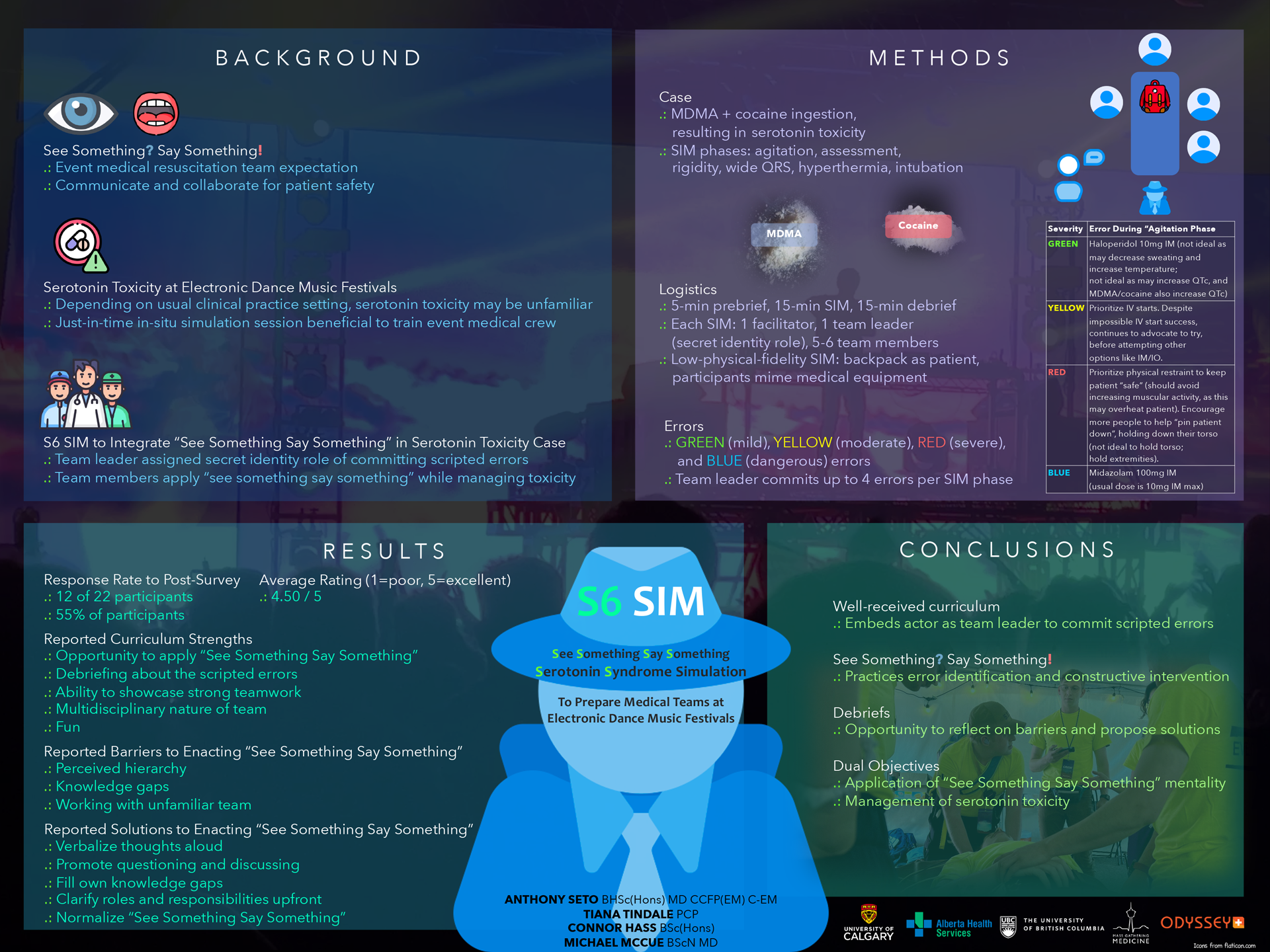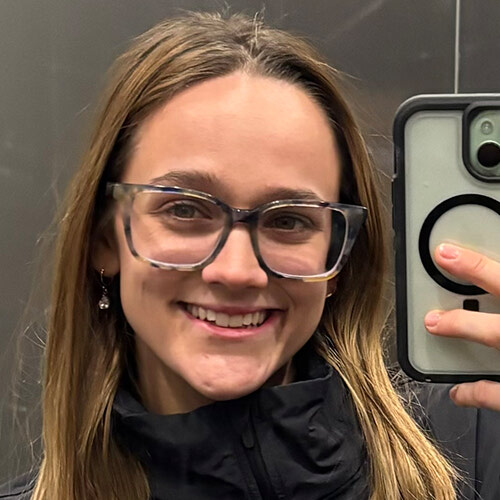|
Title: See Something Say Something Serotonin Syndrome Simulation (S6 SIM) to Prepare Medical Teams at Electronic Dance Music Festivals
Contributors
Anthony Seto BHSc(Hons) MD CCFP(EM)
Tiana Tindale PCP
Connor Hass BSc(Hons)
Michael McCue BScN MD
Introduction
At music festivals, ad-hoc medical teams manage resuscitation cases including serotonin syndrome. However, team members may not always “say something” (i.e., speak up) when they “see something” (i.e., safety issue) requiring intervention. Scripted team leader errors can be incorporated into simulations to allow event medical team members to practice identifying errors and utilizing professional constructive intervention to address issues during resuscitation. This may be a particularly useful exercise given the ad-hoc nature of resuscitation team formation in event medicine, where people have not previously worked together.
Objective
The objective was to create, implement, and evaluate a simulation curriculum that applies a “see something, say something” mentality. The simulation was designed with an actor team leader that would commit scripted errors to challenge team members to speak up. A debrief would discuss barriers to speaking up and strategies to navigate.
Methods
22 participants split into 4 groups of 5-6. 1 facilitator and 1 actor were assigned per group. Actors functioned as resuscitation team leaders and were instructed to demonstrate strong teamwork/communication skills when navigating a serotonin syndrome case, split into 6 phases: i) agitation, ii) primary assessment, iii) rigidity, iv) wide QRS, v) hyperthermia, and vi) refractory rigidity/hyperthermia. Team leaders committed ≤4 scripted errors per phase, choosing from green/MILD yellow/MODERATE, red/SEVERE, and blue/DANGEROUS errors. Participants were blinded to team leaders’ secret acting role, until revealed during debrief.
Results
12/22 (55%) of participants completed the post-program survey. The average rating was 4.5/5. Reported program strengths included applying “see something say something”, debriefing of built-in errors, showcasing of strong teamwork, the multidisciplinary aspect, and that it was fun. Reported barriers to “say something” included perceived hierarchy, knowledge limitations, and working with an unfamiliar team. Reported solutions included verbalizing thoughts, promoting questions/discussion, increasing one’s knowledge, clarifying roles/responsibilities upfront, and normalizing “see something say something”.
Conclusions
The serotonin syndrome simulation with scripted errors was well-received. Post-simulation debriefs enabled participants to reflect on barriers to “see something say something” and strategies to strengthen team dynamics. Error-scripted simulations can be applied to other contexts to simultaneously work through clinical presentations and practice constructive intervention.
|



